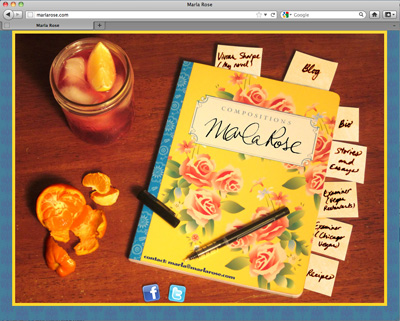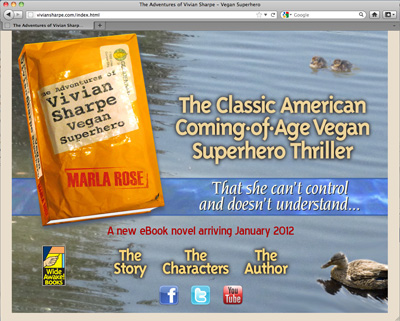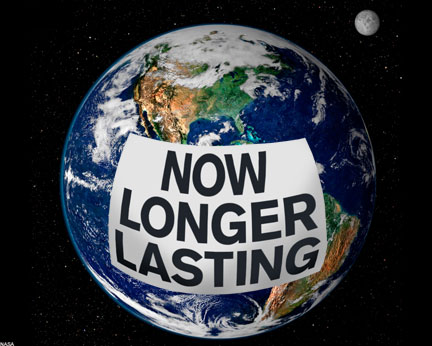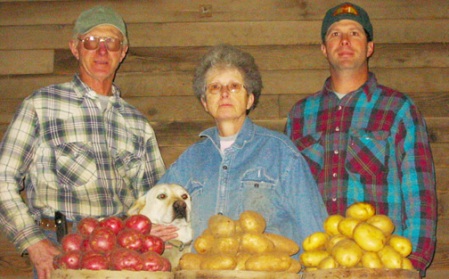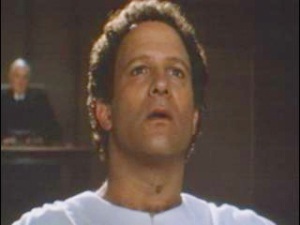 I have been involved in the process of self-publishing and promoting Marla Rose’s novel, The Adventures of Vivian Sharpe, Vegan Superhero, for several months now, and the eBook has finally been published on Smashwords and Amazon, with a free preview on Scribd. Early sales are promising, and we are just beginning to kick off our promotional strategy.
I have been involved in the process of self-publishing and promoting Marla Rose’s novel, The Adventures of Vivian Sharpe, Vegan Superhero, for several months now, and the eBook has finally been published on Smashwords and Amazon, with a free preview on Scribd. Early sales are promising, and we are just beginning to kick off our promotional strategy.
Self-publishing eBooks is a relatively new business model, and I suspect that there is a lot more interest than understanding on the topic. Therefore, over the next few weeks and months, I’ll be sharing our experiences and plans on this blog, so in case you have a similar project you’d like to bring into being, you may find some advice here.
This blog will give an introduction to the publishing process itself, but will be mostly focused on the promotion around the book. We both believe that promotion will be critical to the novel’s success. The idea that you can write a book, put it up on the internet and just leave it there and expect thousands of people to purchase it is probably a bit optimistic. It could happen, of course, just like you could win the lottery or stumble on a treasure chest. Lots of things go viral on the internet for reasons I couldn’t begin to understand. But if you self-publish an eBook and you want some realistic expectations of success, it is a safe bet that you’re going to have to immerse yourself in promotion.
Fortunately, the same system that makes it comparatively easy to publish your own book also makes it easy to promote it. There are a host of wonderful resources out there, and many of them are free. This post and future posts will share some of the knowledge we’re learning, so that others can gain insight and hopefully some inspiration from it.
Last October, a publishing friend talked Marla into self-publishing Vivian Sharpe as an eBook. At this point, the book was largely complete, save for a final editing. While this was taking place, we began to map out a plan for getting people to see it. We knew little about the world of eBooks, but we knew a few things about marketing, and had a good idea of where to begin.
We determined that the novel would be ready to publish by late January or early February (It went live February 1st, so we hit our target). After some research, we determined that we would publish first on Smashwords, a leading site for aspiring authors, and Amazon (more about that process later).
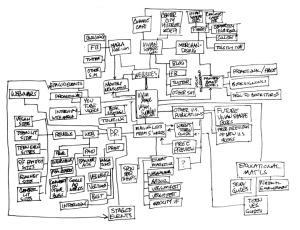 The first thing we did was build an initial mind map plan. The original drawing (at right, you can click on it to enlarge it) was kind of stream-of-consciousness and has since been greatly revised and improved. The map shows a bunch of separate courses of action that we’re now pursuing simultaneously yet methodically, so that each task is completed when we’re ready to take advantage of it, and so that we don’t take on more than we can effectively handle.
The first thing we did was build an initial mind map plan. The original drawing (at right, you can click on it to enlarge it) was kind of stream-of-consciousness and has since been greatly revised and improved. The map shows a bunch of separate courses of action that we’re now pursuing simultaneously yet methodically, so that each task is completed when we’re ready to take advantage of it, and so that we don’t take on more than we can effectively handle.
Fortunately, Marla had written a really strong novel with great characters, a unique and moving story, lots of tension, a fair amount of humor, and several original hooks that help it to stand out in the crowded literary marketplace. In other words, she wrote, in my perhaps biased opinion, a great novel. As you probably know from Marketing 101, a great product is a lot easier to sell than a mediocre one, so if you’re ready to publish your masterwork, I strongly recommend you invest a lot of energy in creating and producing the best possible manuscript. It will certainly help you in the long run.
We also knew there were a few things we wanted to have ready to go by the time the book was released. First, we had to design the book jacket. The somewhat unconventional final design (shown above) is based on a scene from the book where Vivian receives an amateurishly constructed package that greatly complicates the plot. Next, we created a website (the original layout is in an earlier post below), we produced and released an animated YouTube video (the design of which persuaded us to redesign the website to match it), set up Vivian Sharpe Facebook and Twitter pages, and built an initial list of people to contact to promote the book. Our contact list is set in a series of concentric circles radiating with from the center, starting with friends and fans of Marla, and extending out through vegan leaders, influential bloggers, etc. As we contact everyone in one circle, we build the lists and talking points for the next one, plus we gain allies to help us reach more people. We have just begun reaching out in the past couple of days, but we’re already getting some favorable response including a story about the book in a popular newsletter.
Once Marla’s editor had completed her final edits, and those were polished until the manuscript was just right, we got ready to publish. Amazon is the world’s most popular place to buy books, and publishing through their Kindle Direct Publishing is surprisingly easy. We recommend also publishing to Smashwords, because they potentially reach a lot of customers outside of Amazon’s realm, and they will convert the manuscript to virtually every known eBook format, so the book can be read on nearly every reader, computer or smartphone.
We went to Smashwords first, because they have a much more thorough way of walking us through the process of getting the manuscript into the best form for an eBook, thanks to a great resource called the Smashwords Style Guide. Reading this helped us put the manuscript in tip-top form, and answered most of the many questions that came up along the process. The whole process of uploading the book took me about 2 1/2 hours, but I spent most of that time carefully reading the Style Guide, and I also decided it was best to rebuild the manuscript according to their instructions. Once we got through all of that, the process at Amazon, through Kindle Direct Publishing, seemed pretty easy. One little note, Smashwords wants you to use the words “Smashwords Edition” on your title page. Be sure to remember to change that text before publishing it on Amazon.
We also decided to upload a free preview of the book – the first four (short) chapters to Scribd.com. This has proved to be a good deal for us, because several dozen people had downloaded the preview within the first 24 hours of the launch. Amazon and Smashwords both also offer free previews, but Scribd introduces the book to another audience of active readers.
Now, we’re focusing the second phase of our promotion. I’ll have more about that in a future post.


